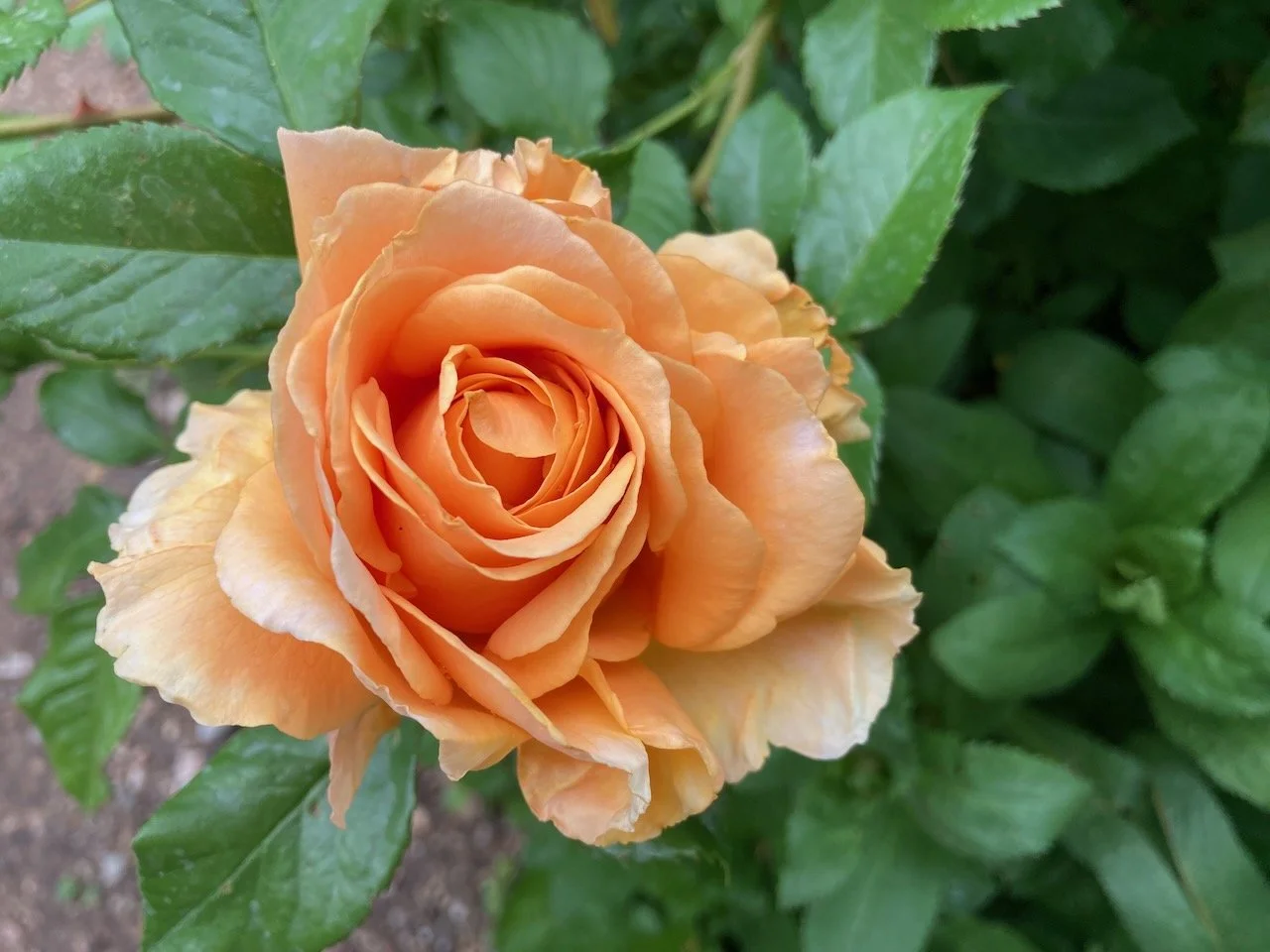Essential Oils 101: What They Are & Why They Matter
Note: this information is for educational purposes only. I am not doctor or medical professional.
This past weekend was the first market of the season. I had a great time, but I recieved a question which baffled me as I thought it was common knowledge. So I thought I'd address it here incase you are also wondering "What are Essential Oils?"
Essential Oils have been part of my life for so long that it hadn't even occurred to me that some people might not know what they are or have any experience with them. Which, I realized, is a problem considering I sell soaps that are scented with pure essential oils as a feature. (Real Smells)
Let's talk about scents for a minute before we dive in. There are two way to give a product a smell. One is essential oils and the other is fragrance oils.
At first glance, they might smell similar—but essential oils and fragrance oils are very different in how they’re made and what they’re used for. Here’s the breakdown:
✅ Essential Oils: 100% Natural
What they are: Concentrated plant extracts from flowers, leaves, bark, or roots.
How they're made: Through steam distillation, cold pressing, or other natural extraction methods.
Why people love them: They offer therapeutic benefits—like relaxation, focus, or immune support.
Example: Lavender essential oil can help ease stress and support better sleep.
⚠️ Fragrance Oils: Synthetically Created
What they are: Man-made scents designed to mimic natural aromas (or create new ones)
How they're made: A mix of synthetic compounds and, sometimes, small amounts of natural ingredients.
Why they’re used: Longer-lasting scent and consistent aroma—often used in candles, perfumes, and soaps.
Example: “Fresh Linen” or “Ocean Breeze” are popular synthetic scents that don’t come from any one plant.
When you see a soap, lotion or candle with the scent of tobacco and bourbon or cucumber melon those will always be fragrance oils. There are certain scents that cannot be made using plant materials because the oils cannot be distilled they are too volatile or they don't have an oil to extract in the case of melon. The sweet scent of melon comes from esters, which is a whole other chemistry ball game.
Before I go on, let’s take a quick look at the history of essential oils and how they are made!
A Brief History of Essential Oils
Essential oils have been cherished for thousands of years—but their journey is as rich and aromatic as the oils themselves. From sacred rituals to modern wellness routines, here’s how these potent plant extracts have stood the test of time.
Egypt, India & China (c. 3000 BCE)
Long before the term “essential oil” existed, ancient civilizations were already harnessing the power of aromatic plants. In Egypt, oils like frankincense and myrrh were central to embalming practices and luxurious beauty rituals. Meanwhile, Ayurvedic practitioners in India and traditional Chinese medicine healers used aromatic herbs to promote balance and health.
🏛️ Greek & Roman Times (c. 500 BCE – 400 CE)
Essential oils gained momentum in classical antiquity. Hippocrates, often called the father of medicine, championed aromatic baths and massages for maintaining wellness. The Romans elevated self-care to an art form—essential oils were infused into their baths, perfumes, and even daily grooming routines.
🕯️ Medieval Europe (5th – 15th Century)
In the shadow of the plague and other illnesses, essential oils took on a more medicinal role. An Arab scholar Avicenna, refined distillation techniques by inventing the coiled tube for the alembic still. That revolutionized oil extraction and preservation—methods still in use today. Oils were used for both spiritual protection and physical healing.
⚗️ Renaissance & Beyond (15th – 20th Century)
The Renaissance sparked renewed interest in herbal medicine. By the early 20th century, essential oils entered the realm of modern science. French chemist René-Maurice Gattefossé coined the term “aromatherapy” after using lavender oil to successfully treat a severe burn—kickstarting a new era of natural healing.
🌱 Modern Use
Today, essential oils are everywhere—from essential oil diffusers and skin serums to natural cleaning sprays and stress relief blends. With the rise of holistic wellness, these ancient extracts have found a fresh relevance in our modern lives. Whether you're looking to relax, refresh, or rebalance, there's likely an oil for that.
We can see that essential oil use is as old a human culture, we’ve been harnessing the amazing scents of plants as long as we can remember. And what’s really fascinating is that we’ve been distilling essential oils for that long. Egyptians figured out a basic method for distilling oils from plants along with making infused plant oils. Around the year 200 BC the alembic still was invented making even better oils. in the 11th century after Avicenna improved the still by inventing a coil cooling tube essential oils became even more potent.
There are several ways to extract the volatile oils from plants. Here is a quick over view:
Steam Distillation – The Most Common Method
This is the go-to method for extracting essential oils from flowers, leaves, and stems.
How it works: Steam passes through the plant material, causing the oils to evaporate. The vapor is then cooled and condensed back into liquid.
Result: Two products—essential oil and hydrosol (like rose water!).
2. Cold Pressing – Used for Citrus Oils
Mostly used for extracting oils from citrus peels (like lemon, orange, and bergamot).
How it works: The peel is mechanically pressed to squeeze out the aromatic oils.
3. Solvent Extraction – For Delicate Flowers
Used for flowers that are too fragile for steam, like jasmine or tuberose.
How it works: Solvents dissolve the plant material to pull out the oils. The solvent is later removed.
Note: This process creates what’s called an “absolute”, not a pure essential oil.
4. CO₂ Extraction – High-Tech & Potent
A modern method using pressurized carbon dioxide to extract oils without heat.
Why it’s special: It preserves more of the plant’s original aroma and benefits.
Now that you know about the two ways to add a scent to a product and the long history and how essential oils are made, you might be asking, "Why are Nettlesome Pantry soaps scented using essential oils?" Well, the answer is simple, I love the true scent of real plants. I like to know that I am smelling the real smell of a plant. If I grab a handful of lavender buds I like knowing that the same smell on my fingers will be in my soap. I also prefer to stay as close to nature as possible when I put something on my skin. And I want that for you too.
Don't get me wrong, I have certainly fallen in love with some of the modern perfumes (Yves Saint Laurent Black Opium I’m looking at you!) , but they can make your head spin with how strong they are and how long lasting. I like knowing that my essential oils will fade away over time and don't contain chemicals that make them last longer than they naturally would. That's great for products that sit on a shelf for months in the light... but fragrance oils can also be endocrine disruptors messing with your hormones and your olfactory process.
You might be thinking essential oils sound great, but are there any down sides? Well there a couple.
1. Price. It takes A LOT of plant material to make a bottle of essential oil which makes some of them, depending on the plant material, very expensive. This is why some of my soaps cost more than others.
Sandalwood for example is currently going for $280-$300 per ounce due to a shortage of true sandalwood trees. That's why I no longer offer "The Hippie" which was a sandalwood soap, I couldn't afford to make it!
2. Limited range of options. I don't find this to be a problem because I can combine essential oils to create my own scents that are out of this world.
3. The scent fades over time. Some people find this a problem, but I see it from a different frame. Everything organic has a life span and so you should enjoy the fragrance of your soap while it's at it's peak.
To sum it all up I choose essential oils because they are closer to nature, they are made using real plants, in my soaps they are in diluted form and gentile on your skin and your nose. They don't generally cause endocrine disruption and since they are made from actual plant oils, they will dissipate overtime making them safer for the environment and water ways.
I hope you found this short intro to essential oils helpful. Please leave me a note below if you want to hear more about essential oils or if you have more knowledge about them! I’m always curious to learn new things.
The website Iberian Coppers Lda. actually has some incredible information on the history of essential oil extraction, alcohol extraction and more!










